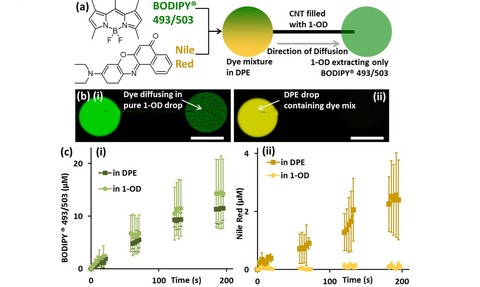The world's smallest chromatography columns
30 Jul 2012

Engineers have demonstrated the use of individual carbon nanotubes to force two differing molecules to separate.
The research showed that the molecules that comprise two chemically distinct liquids will interact differently with the walls of the nanotube as the liquids flow through it.
This will cause one of the liquids to drain through the nanoscale straw faster than the other, thus forcing a separation between the two liquids.
This technology could prove useful in a number of applications, including forensic studies with very small sample sizes and studying molecules extracted from individual cells.
Forensic experts would be able to analyse trace evidence, even down to a single cell or invisible stains.
“We believe that this research will lead to development of tools for analysis on single living cells and push the limits of analytical chemistry to even smaller scales and to single organelle columns,” said Dr. Yury Gogotsi, director of the A.J. Drexel Nanotechnology Institute.
Gogotsi and Dr. Gary Friedman, director of the Drexel Plasma Medicine Lab and a professor of electrical and computer engineering, were the lead researchers on a study about applications of nanotubes for cellular chromatography that was recently published in Nature Publishing Group’s Scientific Reports.
The carbon nanotubes used in this study measure as small as 70 nanometers in outer diameter and are currently the smallest chromatography columns ever made.
The carbon nanotube columns are mechanically robust and are able to withstand repeated bending and compression.
According to the researchers, these characteristics are vital for applications at the cellular level, as the tiny tubes’ durability allows them to penetrate cell membranes.
To download the full report please click on the link below.

